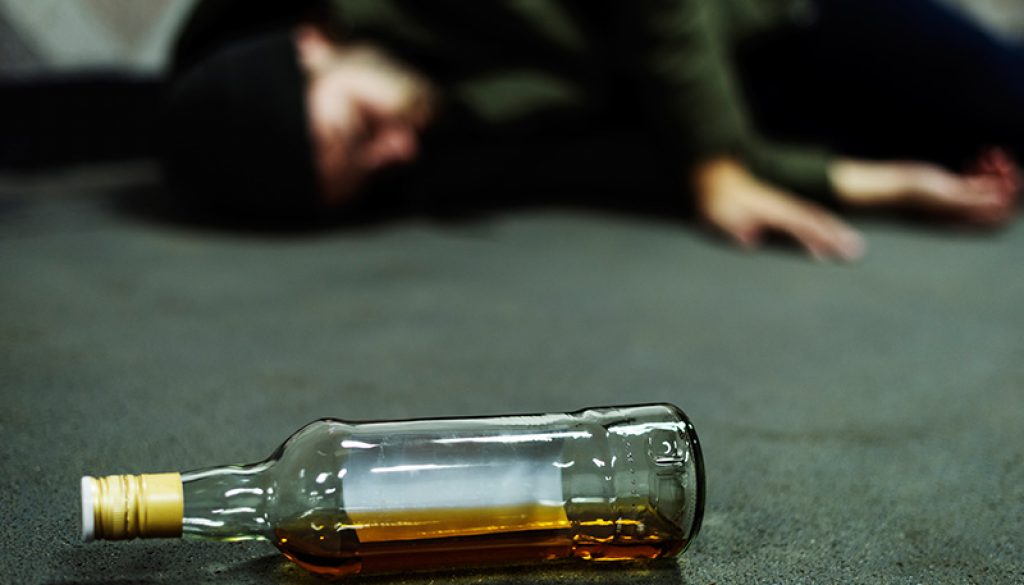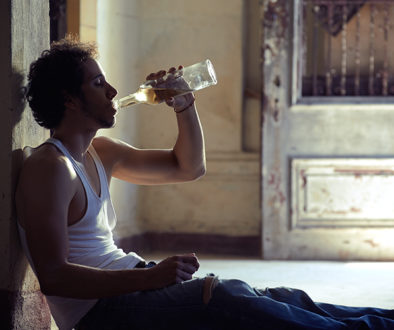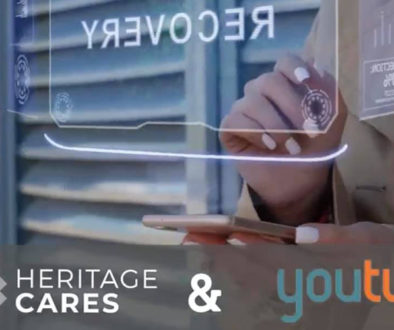The Myths Of Rock Bottom and Willingness—Part 1:
Recovery Slogans
Terms like “rock bottom” and “willingness” could be viewed as nothing more than slogans batted around at various self-help groups. It that were the case there would be little need for alarm.
Recovery slogans are common sayings put forth by people who volunteer their time to help others.
These folks have no ethical obligation to look beyond their own personal experience.
However, when professionals, programs and an entire “healthcare”/treatment industry base their system on these principles; we have a major problem on our hands.
10% Engagement
We have the type of problem that leads to only 10% engagement of people in need, 73,000 per year dead of overdose and 88,000 per year dead as a direct result of chronic alcohol misuse.
Standard operating principles such as administrative discharge, labels of treatment resistant, labels of the family as enablers, and termination from therapy groups for displaying symptoms of the disease (ie..relapse), clearly indicate that the industry is beholden to these misguided assumptions.
Rock bottom and willingness are myths and fortunately more people than ever are challenging these ideas.
I guess that is what happens when 73,000 people die of overdose every year.
No Research
We start questioning concepts that have never before been challenged. There is no research that supports the legitimacy of hitting bottom as a helpful construct, at least in terms of outcomes.
I’m not sure there is a more important outcome than staying alive and we know that rock bottom directly contributes to increased deaths. Especially in this age of fentanyl and carfentanyl.
In addition, the necessity of willingness as a pre-requisite for successful treatment has been completely deconstructed by motivational interviewing.
Interestingly, despite the widespread adoption of motivational interviewing in the addiction field, providers do not actually practice motivational principles.
Cookie-Cutter Treatment
For example, kicking someone out of a therapy group for using or out of a residential program for “non-compliance” is 100% antithetical to motivational principles.
Cookie cutter after-care plans demanding 12-step attendance and involvement in intensive outpatient programs do not reflect individualized client-center programming.
In addition, encouraging the family to “get out of the way” and wait for bottom remains the default setting where family support is concerned.
Baffling
This baffling reality begs at least three questions:
- How did these practices become the industry standard?
- Why is this (clearly inappropriate outlook) still the prevailing attitude?
- What other options are available for the individual and/or family looking for support?
How Did We Get Here?
Understanding the origin of “rock bottom” and “willingness”.
It is nearly impossible to trace the origin of rock bottom, or any slogan for that matter.
As previously mentioned, this concept was never meant to guide the healthcare (treatment) policies of any entire nation. It was a slogan that served a purpose within the confines of a self-help group.
We can, however, make some universally agreed upon assumptions that will help us understand how we got here.
Alcoholics Anonymous
Everyone agrees that the recovery slogan “rock bottom” or “hit bottom” (as it relates to addiction) originated in the rooms of Alcoholics Anonymous. The Alcoholics Anonymous 12 & 12 (12 Steps and 12 Traditions) published in 1953 stated:
- “Why all this insistence that every A.A. must hit bottom first? The answer is that few people will sincerely try to practice the AA program unless they have hit bottom.” 12&12, p. 24
Willingness, as applied to addiction recovery, was present in the AA literature right from the very start as well: - “If you have decided you want what we have and are willing to go to any length to get it – then you are ready to take certain steps” BB, p. 58.
I would like to point out that the 12 & 12 clearly states – “few people will sincerely try to practice the AA PROGRAM unless they have hit bottom”.
In addition, the Big Book said – “if you want what we have to offer (i.e. the AA program) and are willing ….”
Not The Only Way
The 12 & 12 doesn’t say that few people will sincerely try to get recovery unless they hit bottom, or few people will sincerely attempt treatment unless they hit bottom, or few people will sincerely try to get healthier unless they hit bottom.
The focus is on what is required for AA and AA is NOT the only way to recover.
We do not have to debate that do we?
If you object comment below and I will get you the quotes from Bill Wilson himself on multiple pathways to recovery. I will also get you the research on pathways to recovery.
The Big Book does NOT say if you want to get some help you have to be willing.
It does NOT say if you want to see a professional addiction specialist or receive medicine you have to be willing to go to any length.
Again, the Big Book was talking ONLY about the program of Alcoholics Anonymous.
These concepts, in their original intent, were 100% applicable to AA only!
Professionalization
The problem was, and still is, the professionalization of the 12 steps and the co-opting of a self-help program via the treatment industry.
Essentially, a violation of the 8th tradition: “Alcoholics Anonymous should remain forever nonprofessional, but our service centers may employ special workers”.
This is the great tragedy of the recovery revolution.
Perhaps then, the real question is:
“How did the treatment industry get away with professionalizing the 12-steps and other AA principles”?
We do not have the bandwidth in this blog post to provide a comprehensive review of the treatment industry in America.
There are many people who are much more qualified than I am to provide such a historical exposition.
For reference and verification of what I talk about below please see the following:
- Miller and Carol Rethinking Substance Abuse:
- What the Science Shows and What We Should Do About It;
Furthermore, most of this my opinion and my theory. It is logical and makes sense but at the end of the day it is one person’s take on how we got here.
It Works If You Work It?
What follows is a very crude summary of “how we got here”:
1) Alcoholics Anonymous works (if you work it). We have no idea about the recovery rates pre-AA and we have no idea about the recovery rates outside of AA post launch and we see much debate surrounding the recovery rates associated with AA right now.
However it is clear, that AA provided the first tangible program of hope and recovery for many hopeless alcoholics.
It was the first “program” that grew and it was certainly the first program with a “book or manual”.
Published April 10, 1939
The Big Book was published April 10, 1939 and is one of the most influential and important books of the 20th century. It could be argued that it is one of the most important books of all time.
2) The Stigma-Part 1: People with substance use disorder, regardless of the substance, are very difficult to deal with and in the mid 20th century the stigma was much stronger than it is today.
As time went by, Alcoholics Anonymous represented the only substantial group of people willing to work with those suffering with alcohol use disorder (and other addictions).
As the need for more formal “treatment” emerged Alcoholics Anonymous members were the ONLY ONES WILLING TO WORK WITH THIS STIGMATIZED GROUP.
Therefore, it was natural that the principles of AA were brought along for the ride.
3) The Minnesota Model: In 1948-1950 Hazleden Foundation.
The Minnesota Model
Pioneer House and Wilmer State Hospital in Minnesota develop a professionalized, multi-disciplinary team approach to “treating” addiction. It is aptly named, the Minnesota Model.
The model is founded on AA principles combined with medical staff and eventually professional counseling. However, it is naïve to think that AA principles did not guide the process.
Imagine a “non-recovering” doctor arriving to work in a Minnesota Model program.
The patients were probably a challenging group and the AA model probably held things together.
AA members were fully conditioned to believe that their way was the only way. For non-recovering staff it was either assimilate or move on. This was not really an interdisciplinary model as much as it was an AA model with some medical and psychological consultation. But more on that in a moment.
Notably: on an anecdotal level these programs work.
For the first time ever there is hope and a method to the madness of dealing with an active alcohol use disorder.
28 Days
The Minnesota Model is a great way to kick-start the treatment industry.
However, it is problematic to underestimate the primacy of Alcoholics Anonymous in the model and it become mores difficult to reconcile this reality in relation to a healthcare issue.
This model eventually becomes the 28-day inpatient rehab program reimbursed by health insurance and expands rapidly across the nation.
It becomes the “default setting” for addiction treatment.
The National Center for Biotech Information (NCBI) put it this way: “For many years, some in the treatment field considered the Minnesota model the only “workable” method of treatment for substance use disorders”.
I would argue that most professionals in the treatment field continue to think this way and that the AA/12-step principles are still the cornerstone of most programs.
4) The Stigma Part 2: Since the “general public” views addiction as a moral failing there is little interest or pressure for the delivery of addiction treatment services to be studied and evaluated. “Who cares what happens to those wretched addicts and alcoholics; they did it to themselves”.
The Minnesota Model carried on unencumbered by oversight or research, relatively speaking.
Unproven Practices
For decades these unproven practices plows deeper and deeper into the collective conscious of the industry. Before long even the non-recovering staff are converted.
5) Professionalization fails to produce diversity in treatment approaches:
The 1970’s and 1980’s saw the movement away from hiring recovering people toward the employment of licensed professionals.
This is not necessarily a positive step in and of itself, however, one the logical results should have been a de-emphasis on the one-size fits all model. If you have less AA members or NA members being employed you would naturally assume a retreat from some of the ingrained practices.
This did NOT happen. Mainly, because the administration and leaders in the industry had come up in the Minnesota Model and remained committed to that approach.
6) Hazleden starts selling books and positions itself as the nation’s expert:
William White
According to William White:
“In 1954, Hazelden entered the world of publishing when it bought the rights to Twenty-Four Hours a Day, a recovery meditation book that would go on to sell more than seven million copies. Hazelden went on to publish materials ranging from scholarly texts such as Not-God: A History of Alcoholics Anonymous by Ernest Kurtz, to popular self-help books such as Melanie Beatties Codependent No More. Hazelden publishing grew from this single title to a division that today distributes more than three and one half million books, pamphlets, videos, and recovery celebration items per year”.
Naturally, the emphasis from one of the founders of the Minnesota Model will be on Minnesota Model type programs. Abstinence-based and 12-step oriented.
7) The 12-step foundation is useful for after care and a synergistic relationship has been formed with AA world service: The 12-steps hang in nearly every treatment center in America.
The Backbone
They form the backbone of the daily schedule for many inpatient programs and they form the core of most after-care plans.
These treatment centers receive reimbursement for professional services.
How is this NOT violation of the 8th tradition and why has AA world service never pushed back? Simple, rehabs fill the rooms of AA. It’s a mutually beneficial relationship.
I also assume there is literally nothing AA can do about this practice.
How could they stop it even if they wanted to?
Treatment Culture
This all adds up to a treatment culture that primarily reflects the values, traditions, mores and norms of Alcoholics Anonymous.
This is clearly inappropriate and does not reflect a practice consistent with evidenced based healthcare.
Then again, there are many things about other aspects of healthcare that is problematic, this is just addiction treatment’s most obvious issue.
Since the values and norms of the “rooms” also carry the day in the treatment space; slogans like “hitting bottom” and “willingness” drive everyday policies and procedures.
This is how we got here.




